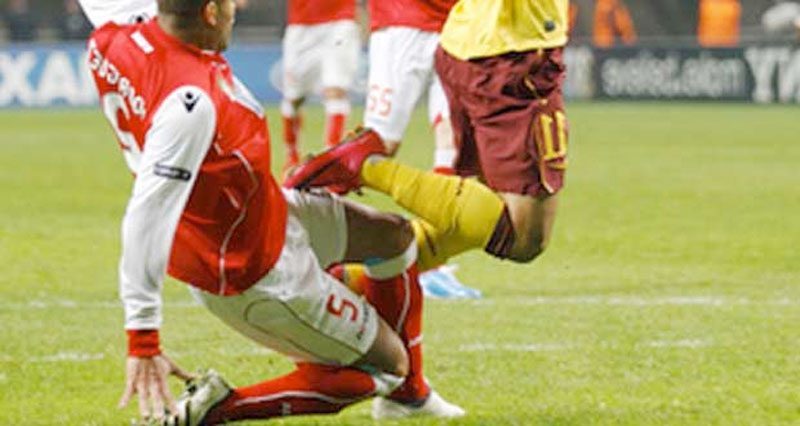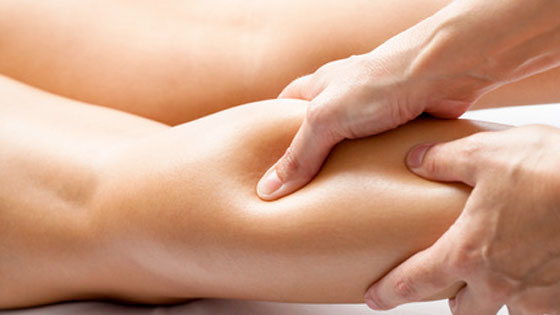Probably 75% of Football injuries are preventable. The best protection from injury is correct warm-up and conditioning which can help you avoid unnecessary injury that can ruin the season.
Preventing Football/Soccer Injuries
Here are our 7 top tips for avoiding football/soccer injuries:
Warm Up
Warming up is often overlooked but should be part of your injury prevention routine. A good warm-up will:
- Increase the temperature of your muscles – (like biological washing powder) they work better at a temperature of 40 degrees.
- Blood flow and oxygen to your muscles increases.
- Speed of nerve impulses improves. This will make you run faster!
- Range of motion at joints increases. This reduces the risk of tearing muscles and ligaments.
Warm up will not only help avoid injury but will also improve performance.
A warm-up should consist of:
- Gentle jog to circulate blood and oxygen supplying the muscles with more energy to work with.
- Stretching to increase the range of motion at joints (see below).
- In particular, dynamic stretching exercises which involve movement.
- Sports specific exercises and drills.
How long should a warm up last?
- The warm-up should last between 15 and 30 minutes.
- Do not warm up too early. The benefits are lost after about 30 minutes of inactivity.
- The FIFA 11+ is a programme developed to help reduce injuries in soccer. It consists of a series of exercises that should be used before training and matches.
Cool Down
This is also often overlooked in favour of the bar but can help avoid injuries and boost performance. The aim of the cooldown is to:
- Gradually lower heart rate.
- Circulate blood and oxygen to muscles, restoring them to the condition they were in before exercise.
- Remove waste products such as lactic acid.
- Reduce the risk of muscle soreness.
The cooldown should consist of a gentle jog followed by light stretching.
Sports Massage for Soccer injury prevention
- Get a regular sports massage.
- Massage can flush your muscles of waste products and release tight knots, lumps, and bumps.
- It is possible for a good sports massage therapist to identify potential trouble spots long before they become injuries.
Footwear and protective equipment
Not having the proper equipment for playing can cause injury. The ideal football boot should have:
- A rigid heel counter
- Good depth in the upper
- A flexible forefoot
- A wide sole and be slightly curved in shape.
Shin pads are also an essential piece of kit. Look after your legs!
Nutrition and Hydration
Proper nutrition is important. A bad diet will prevent you from recovering from training sessions making you more prone to injury. A balanced diet is what you should aim for:
- Carbohydrate is important for refuelling muscles.
- Protein rebuilds muscles.
- If you become dehydrated then less blood will flow through muscles. The muscles will be more prone to injury.
- Vitamins and minerals are required for a number of reasons related to recovery.
Much of what is discussed above should be part of your sporting routine. A biomechanical analysis can help identify possible injury risks. Orthotic devices can help. Also, an assessment from a sports therapist or specialist can identify weak areas and possible injury risks. A course of exercises specific to your needs can give you the best chance of avoiding injury.
Fitness
- This includes general conditioning, aerobic fitness, and muscular strength. If you are in good condition then you are less likely to get injuries.
- Strong muscles are less likely to tear.
- A player that can keep going for the full 90 minutes is less likely to be late in a tackle. Good all-around conditioning will balance the body and help avoid necessary injuries.
- Footballers are prone to over developing their hip flexor muscles through repetitive kicking with their favoured side.
- This twists the pelvis and lower back causing other problems including recurrent hamstring injuries.
Recovery
Not allowing your body to recover properly from training will eventually result in injury. Your body needs time to rebuild itself stronger before the next training session. Sleep is also an important part of your training. If you are not getting enough, get it sorted.
You are not training when you are training. You are training when you train and allow your body to grow back stronger.









